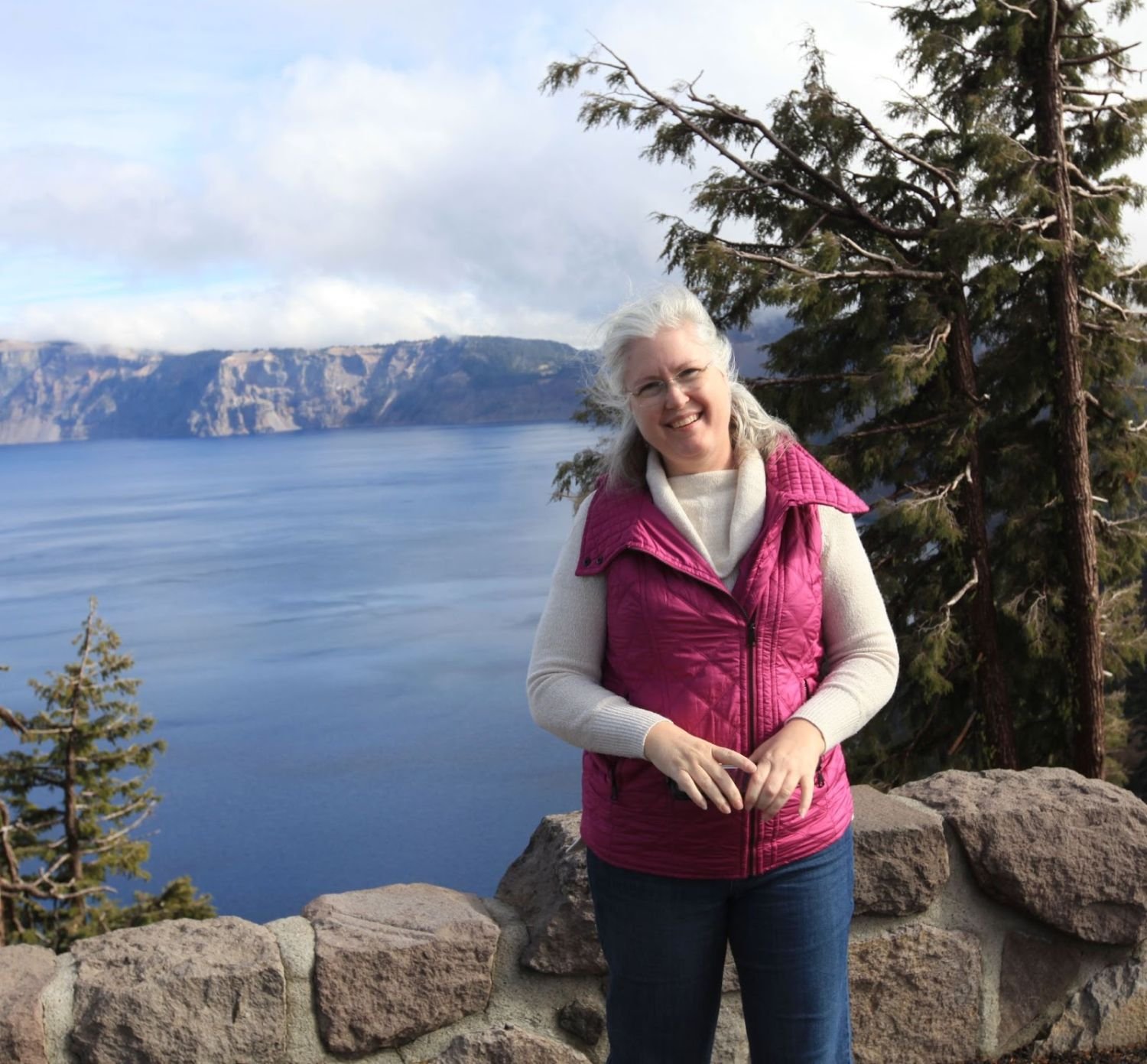2024 Lent Devotional: Week 4
By Rev. Richenda Fairhurst
From Mount Hor they set out by the way to the Red Sea, to go around the land of Edom; but the people became impatient on the way. The people spoke against God and against Moses, "Why have you brought us up out of Egypt to die in the wilderness? For there is no food and no water, and we detest this miserable food." Then the LORD sent poisonous serpents among the people, and they bit the people, so that many Israelites died…. So Moses made a serpent of bronze, and put it upon a pole; and whenever a serpent bit someone, that person would look at the serpent of bronze and live.
Numbers 21:4-6, 9
When our children were small, our family lived in the verdant Pacific Northwest. Our yard was filled with evergreens, ferns, pink, clumpy rhododendrons, and banana slugs. We learned things about slugs most people would be glad never to know, such as the fact that banana slugs can grow 10 inches in length, and they have more teeth than sharks.
We have family also in Arizona and New Mexico, and one summer we traveled to see the mesas, canyons, and landscapes of the Desert Southwest. As we were driving a particularly long stretch of desert road, my daughter spoke up, ‘why is everything here dead?’ I looked where she was looking, the dry land with shrubby brush and low cactus—spiny things. And, it seemed to go on endlessly. A banana slug wouldn’t last five minutes, regardless of all those teeth.
For my children, this was an entirely unfamiliar and unknown landscape. They had never seen such a dusty horizon. For me, however, I spent a number of years in Arizona growing up. I knew the hues of blues, golds and purples in this desert garden. I knew how to see the beauty of the sage-y green and sudden yellow of the land against distant blue-bronze mountains. Her observation opened a conversation in the car about how life looks different in different places. We deepened our appreciation of the colors of the desert together.
In reflecting on this reading from Numbers during Lent this year, I am thinking about Moses and the people who followed him. For the Hebrews, Egypt had been their home. They knew the land, what grew there, what lived there, how to find water, and where to find food. They knew which plants grew tall, and which insects to avoid (banana slugs or scorpions).
When Moses led God’s people out of Egypt, they traveled into the unknown. Suddenly in a new land—to them a wilderness—every rock and shrub was new. They had to find water, they had to find food. They found themselves in all new ecosystems, including one with poisonous snakes. They weren’t just on the move, they were experiencing changes to the land that they didn’t yet know how to navigate.
Climate change is here. Where I live now, fire is here more than ever. With the heat and drought, the Douglas Fir forests are dying. They won’t thrive here again for hundreds of years, if ever. Their replacements will be madrones and Ponderosa Pine.
Burning fossil fuels has changed the very character of the globe. Millions are migrating to lands they do not know, trying to figure out what to plant, what to eat, where to find water. Others are living where they always did, but asking the same questions as the climate changes around them, familiar things die, and new creatures move in. These creatures are escaping, too, and on the move seeking an ecosystem they remember.
Death is in the eye of the beholder. The people who followed Moses complained that they would die in this new place. We in our time might also be looking at our own landscapes and noticing what is dying off.
As people of faith, and especially at Lent, even as we see the reality of climate change around us, we know that death does not have the last word. For us, words like resurrection have the final authority. We are a restoration people. We can make choices about how we will respond to the changing climate. We can divest from fossil fuels and step away from complicity with those who profit from this tragedy.
We can raise the staff of life in our church yards, for all to see. We can restore natural landscapes where we worship. We need to stop adding petrochemicals to the soil to kill this or kill that; there has been enough killing. It’s time for life again. It’s time to see the hues that are in this new place, and changing in our old place. We can plant native plants, restore soils, make way for mighty oaks, nurture food forests, build a biodiversity highway across our cities and in our towns where migrating birds can rest, and butterflies can sample nectar.
This year, General Conference legislation includes a resolution to attend to our sacred ground: the church land where we worship. We can rewild and replant and restore this land, get to know where we are again, and learn how to be stewards of this good earth.
Prayer
Restoration God, you made a stable climate, and life-filled landscapes with every kind of creature. You made us to live among the living things, and to admire the majestic carving of canyons, upwellings of oceans, and vast mountains. Yet heat and floods and drought have made death visible. The plundering of earth has taken untold billions of lives: depleting vast populations of birds, lizards, crabs, and whole forests. Even the land on which we have planted our churches has not escaped. Forgive us. Let us replant and restore our sanctuaries. Let us be a restoration people, with a new understanding of your landscape, and your love for creation. Amen.
You make our collective work possible by your witness for justice every day in your church, community, and Annual Conference. MFSA does not receive any financial support from the United Methodist Church's giving channels. 100% of our budget is funded through your membership dues and your generosity in giving.
Rev. Richenda Fairhurst is active in the United Methodist Creation Justice Movement. She is a member of the Ecumenical Ministries of Oregon board, where she chairs the Creation Justice Committee / Oregon Interfaith Power and Light. She is a member of the Pacific Northwest Annual Conference, living in Southern Oregon. Find her at JustCreation.org

